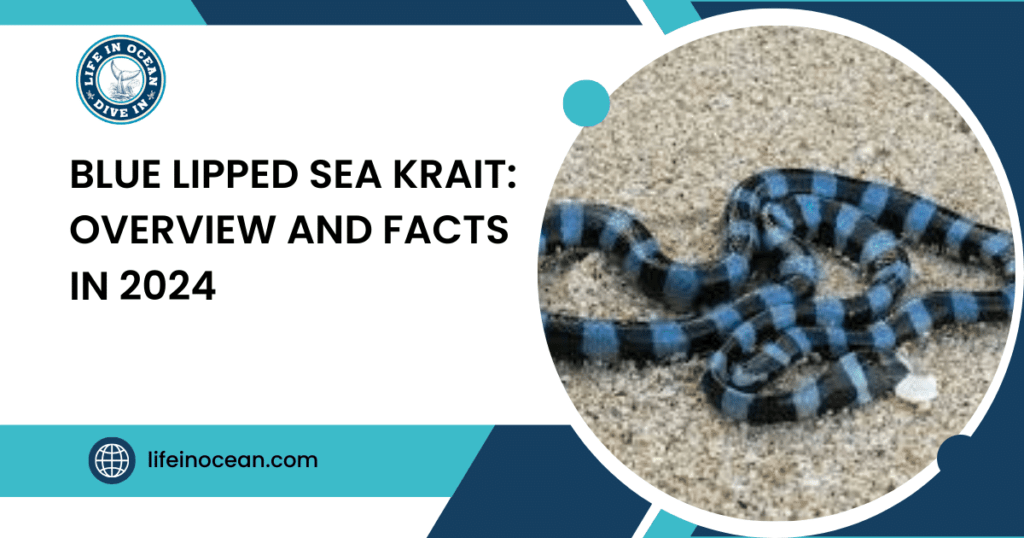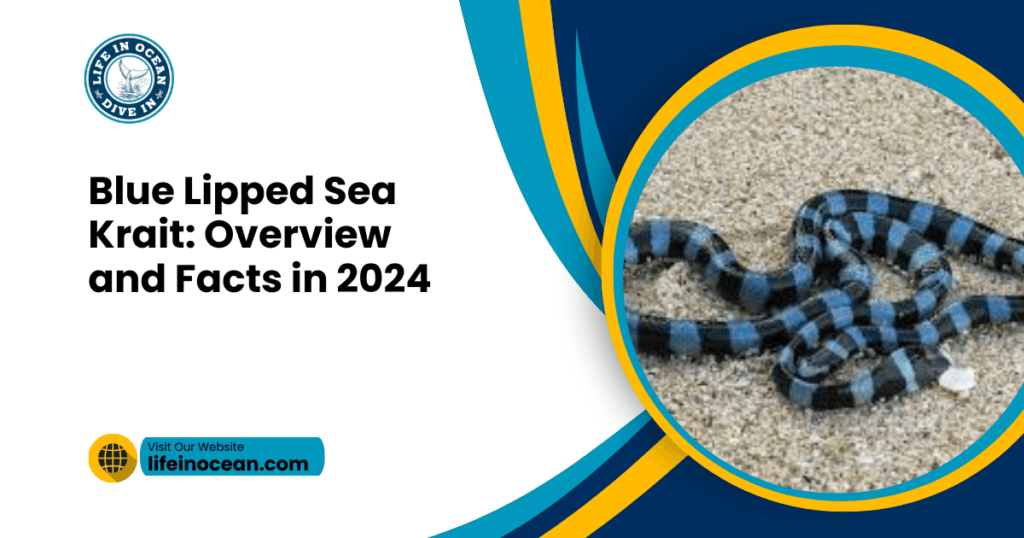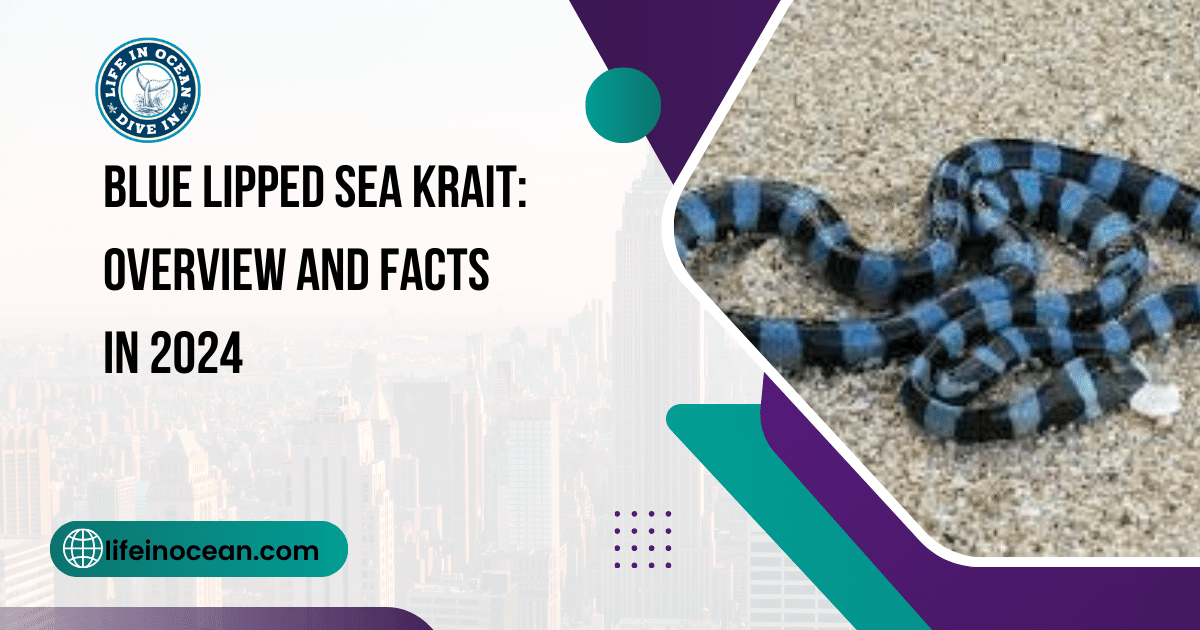Ever heard of a sea creature with blue lips? Meet the blue lipped sea krait. This fascinating serpent, also known as the banded sea snake, boasts striking black and white stripes contrasting against its vibrant blue mouth. Don’t be fooled by its appearance; this marine reptile is both mesmerizing and deadly. Found in the waters of Southeast Asia and Australia, the blue-lipped sea krait is a masterful swimmer equipped with venom that can take down its prey swiftly. Join us as we dive into the world of this enigmatic creature, exploring its unique characteristics and uncovering the secrets behind its captivating blue lips.
Table of Contents
Key Takeaways
- Understand the habitat and distribution: Blue-lipped sea kraits prefer coastal waters and coral reefs in the tropical Indo-Pacific region.
- Be aware of their diet and nutrition: Sea kraits feed primarily on eels and small fish, utilizing their venom to immobilize prey.
- Learn about their behavior and lifestyle: These sea snakes are highly adapted for underwater life, spending most of their time in the ocean.
- Know the reproduction and lifecycle: Blue-lipped sea kraits give birth to live young and exhibit unique mating behaviors.
- Stay cautious of their venomous nature: While their venom is potent, sea kraits are generally docile unless threatened or provoked.
- Support conservation efforts: Due to threats like habitat destruction and bycatch, conservation measures are crucial to protect the blue-lipped sea krait population.
Blue Lipped Sea Krait Overview
Taxonomy
The blue-lipped sea krait is part of the Elapidae family and falls under the species Laticauda laticaudata. The genus name “Laticauda” highlights its broad tail, showcasing a distinctive feature of this snake. Its classification provides insights into its genetic makeup and evolutionary relationships within the animal kingdom.
Description
With a sleek body that can reach lengths of up to 1.5 meters, the blue-lipped sea krait stands out with its striking blue upper lip. This serpent’s smooth and shiny scales contribute to its elegant appearance in aquatic environments, making it easily recognizable by researchers and wildlife enthusiasts alike.
Physical Characteristics
Featuring a flattened head and a slender snout, the blue-lipped sea krait boasts highly venomous fangs positioned at the front of its mouth for hunting purposes. Its cylindrical and elongated body enables graceful movement through water, showcasing agility while swimming or hunting for prey.
Habitat and Distribution
Geographic Range
Blue lipped sea kraits, commonly found in tropical waters of the Indo-Pacific region, inhabit coastal areas spanning from eastern Africa to Japan and Australia. Countries like Indonesia, Thailand, and Malaysia frequently report sightings of these distinctive sea snakes. Their presence in such diverse locations highlights their adaptability to various environments.
These serpents thrive in shallow coastal waters, favoring habitats like coral reefs and mangroves. They are known to explore estuaries and lagoons as well. Blue lipped sea kraits exhibit remarkable versatility by being equally comfortable in both marine and terrestrial settings. Their ability to navigate different ecosystems underscores their resilience as a species.
Adaptation to Saltwater
The blue lipped sea krait boasts specialized glands that aid in excreting excess salt from its body, enabling it to maintain a healthy balance while living primarily in saltwater environments. Positioned atop its snout, the nostrils of this snake allow it to breathe effortlessly even when swimming near the water’s surface. Moreover, their skin serves as an effective barrier against saltwater penetration, preventing dehydration effectively.
Diet and Nutrition

Unique Hunting Strategy
Blue lipped sea kraits have a distinctive hunting technique known as “lingual luring.” They use their bright blue lips to attract prey like eels and small fish. Once the prey is near, these snakes strike swiftly with lightning speed.
This unique strategy showcases how these sea kraits adapt to catch their preferred meals effectively. By utilizing their striking blue lips as bait, they can draw in unsuspecting prey before making a quick move to secure their meal.
Diet Details
The primary diet of blue lipped sea kraits mainly consists of eels and small fish. These snakes are versatile predators that feed on various species, including moray eels and gobies. Their flexible jaws enable them to consume prey larger than their own head.
These reptiles showcase an impressive ability to hunt diverse aquatic creatures efficiently due to their specialized diet preferences. With a wide range of species on the menu, blue lipped sea kraits demonstrate remarkable adaptability in finding sustenance in marine environments.
Behavior and Lifestyle
Habits
Blue lipped sea kraits, known for their distinctive blue mouths, are primarily nocturnal hunters. They actively search for prey during the night and rest during the day to conserve energy. These snakes prefer a solitary lifestyle, not forming social groups or colonies like some other species. Their excellent swimming abilities allow them to cover long distances in pursuit of food, often preying on small fish and eels in coral reefs.
- Nocturnal hunters
- Solitary creatures
- Excellent swimmers covering long distances
Dual Lifestyle
Despite spending most of their time in water, blue lipped sea kraits also venture onto land for various activities. When it comes ashore, they use their paddle-like tails to move around efficiently. This dual lifestyle is crucial as they need to come out of the water to rest and digest after consuming their prey underwater. During the breeding season, female sea kraits return to land specifically to lay their eggs safely away from aquatic predators.
- Move on land with paddle-like tails
- Rest and digest meals on shore
- Females lay eggs on land during breeding season
Reproduction and Lifecycle
Reproduction Process
Blue lipped sea kraits, like many other snakes, reproduce through internal fertilization. The female blue lipped sea krait will lay her eggs on land in hidden locations such as crevices or burrows. These secretive spots provide protection for the vulnerable eggs during the incubation period of about two months.
The fascinating part is that after this relatively short time, the hatchlings emerge fully formed and independent. Unlike some other species where offspring need care and attention from their parents, these baby blue lipped sea kraits are ready to take on the world from day one.
Venomous Nature and Safety
Venom Potency
The blue lipped sea krait possesses venom that is incredibly potent and neurotoxic. This venom targets the nervous system, leading to paralysis and respiratory failure in its prey. Despite this deadly ability, these snakes seldom pose a danger to humans because of their calm demeanor. They typically reserve their venom for hunting rather than defense.
Encounters with the blue lipped sea krait are generally safe as they tend to avoid interactions with humans unless provoked or threatened. While incidents of snakebites by these creatures are uncommon, any bite should be treated as a medical emergency due to the toxicity of their venom. Local communities often hold valuable traditional knowledge on how to steer clear of these snakes, helping prevent accidental encounters.
Conservation Status
Population Status
Blue lipped sea kraits’ population status remains a mystery due to their elusive nature. Estimating their numbers accurately is challenging, but they are not currently classified as endangered or threatened. These snakes dwell in remote areas, making it difficult for researchers to track and study them extensively.
Conservationists face hurdles in determining the exact population of blue lipped sea kraits because of their secretive behavior. Despite this challenge, these creatures are not under immediate threat of extinction based on current assessments.
Threats to Survival
Habitat destruction poses a significant threat to blue lipped sea kraits. Factors such as coral reef degradation and coastal development can disrupt their natural habitats. Pollution from human activities and overfishing further endanger these marine reptiles by altering the delicate balance of their ecosystems.

Moreover, climate change and rising sea levels impact the nesting sites crucial for the survival of blue lipped sea kraits. As these environmental changes continue, conservation efforts become increasingly vital to protect this species from further decline.
Conservation Efforts
To safeguard the habitats of blue lipped sea kraits, various marine protected areas have been established around regions where they are commonly found. These designated zones aim to preserve the ecosystems essential for sustaining healthy populations of these snakes.
In addition to protected areas, conservation organizations actively raise awareness about the significance of blue lipped sea kraits in maintaining ecosystem health. By educating local communities and stakeholders about these creatures’ importance, efforts are made towards ensuring their long-term survival.
Research studies play a pivotal role in enhancing our understanding of blue lipped sea kraits’ behavior and ecology. Through scientific investigations into their habits and interactions with their environment, experts can develop more effective conservation strategies tailored to the specific needs of this unique species.
Interesting Facts
Special Features
Blue lipped sea kraits have a unique glandular adaptation allowing them to drink freshwater while at sea. Their exceptional eyesight aids in efficient prey location both above and below water. Despite their reputation, these snakes exhibit a calm demeanor when encountered by divers.
These fascinating creatures are closely related to other species within the Laticauda genus, like the banded sea krait (Laticauda colubrina). Belonging to the Elapidae family, they share ancestry with cobras and mambas. Although blue lipped sea kraits resemble eels in appearance, they lack biological relation.
Related Animals
Sea snakes have evolved distinct features that set them apart from land-dwelling serpents. For instance, their flattened bodies aid in swimming through ocean waters efficiently. These aquatic reptiles possess specialized tails for propulsion underwater.
While many snake species give birth to live young or lay eggs on land, blue lipped sea kraits prefer laying eggs on shorelines or rocky crevices near the water’s edge. This behavior ensures their offspring remain close to their natural habitat upon hatching.
Summary
You’ve now journeyed through the fascinating world of the blue-lipped sea krait, uncovering its habitat, diet, behavior, reproduction, venomous nature, conservation status, and intriguing facts. These insights have shed light on the intricate balance these creatures maintain in their ecosystem. Remember, knowledge is power. By understanding and appreciating these sea kraits, you can contribute to their conservation efforts and help protect their delicate habitats. So, next time you’re near a coastal area, keep an eye out for these remarkable creatures and spread the word about the importance of preserving their existence.
Frequently Asked Questions

What is the diet of a Blue Lipped Sea Krait?
The Blue-Lipped Sea Krait primarily feeds on small fish and eels. Its diet consists mainly of aquatic creatures that it hunts in its ocean habitat, showcasing its adept hunting skills underwater.
Where can you find the Blue Lipped Sea Krait?
Blue-Lipped Sea Kraits are commonly found in the tropical waters of the Indian and Pacific Oceans. They prefer shallow coastal areas where they can easily hunt for prey and seek refuge in coral reefs or rocky crevices.
Is the Blue-Lipped Sea Krait venomous to humans?
Yes, the Blue-Lipped Sea Krait is venomous, possessing potent neurotoxins in its bite. While not aggressive towards humans unless provoked, caution should be exercised when encountering them due to their venomous nature.
How does reproduction occur in Blue-Lipped Sea Kraits?
Reproduction in Blue-Lipped Sea Kraits involves mating between males and females usually during specific seasons. Females lay eggs after mating, with some species giving birth to live young instead of laying eggs like other reptiles.
Why is conservation important for Blue-Lipped Sea Kraits?
Conservation efforts are crucial for protecting the habitats of these sea snakes as factors like pollution, climate change, and overfishing threaten their survival. By safeguarding their environment, we can ensure the continued existence of this unique species.

